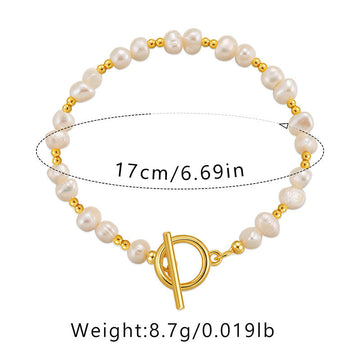The Labradorescence Phenomenon in Labradorite Bracelets and Key Factors for Quality Assessment
Labradorite, a plagioclase feldspar mineral, is renowned for its striking optical effect known as labradorescence—a vibrant play of iridescent colors that shifts across its surface when viewed from different angles. This phenomenon, combined with the stone’s durability and affordability, has made labradorite a popular choice for bracelets and other jewelry. Understanding the science behind labradorescence and the criteria used to evaluate its quality can help enthusiasts appreciate the gem’s unique beauty and make informed choices when selecting pieces.
1. The Origin of Labradorescence: Light Interference in Layered Crystals
Labradorescence arises from the interaction of light with microscopic, parallel layers within the labradorite crystal. These layers, composed of alternating regions of sodium-rich albite and calcium-rich anorthite, form during the stone’s cooling process through a mechanism called exsolution. As the feldspar mixture cools, the two components become immiscible, separating into thin, lamellar structures. When light enters the stone, it reflects off these layers at varying angles, causing constructive and destructive interference. This interference produces the vivid spectral colors—blues, greens, yellows, and sometimes reds—that characterize labradorescence. The intensity and range of colors depend on the thickness and spacing of the layers, with thinner layers typically yielding more vibrant hues.
The Role of Crystal Orientation and Cut
The orientation of labradorite crystals during cutting significantly impacts the visibility of labradorescence. Skilled lapidaries carefully analyze the stone’s internal structure to position the layers perpendicular to the surface, ensuring maximum light reflection. Cabochon cuts, with their smooth, domed tops, are preferred over faceted cuts for labradorite bracelets, as they enhance the play of color by minimizing light dispersion through facets. A well-executed cut will display labradorescence across the entire surface, while a poorly oriented stone may show dull patches or limited color range.
2. Evaluating Color Intensity and Spectrum in Labradorite
The quality of labradorite is often judged by the vibrancy and diversity of its labradorescence. High-quality specimens exhibit bold, saturated colors that cover a broad spectrum, transitioning smoothly as the stone is tilted. Blues and greens are the most common and sought-after hues, with some stones displaying rare flashes of gold, orange, or even purple. The presence of multiple colors within a single stone, often described as a “firework” effect, adds to its desirability. Stones with muted or washed-out colors, or those that show labradorescence only in narrow bands, are generally considered less valuable.
Color Stability and Viewing Angles
A key aspect of labradorite quality is the consistency of its labradorescence across different viewing angles. Premium stones maintain their color intensity regardless of how they are rotated, while lower-quality specimens may lose their glow or appear dark when viewed from certain directions. This stability is influenced by the uniformity of the layered structure; irregular layers or inclusions can disrupt the light interference pattern, leading to inconsistent color display. When selecting a labradorite bracelet, it’s advisable to examine the stones under multiple light sources and angles to assess their color performance.
3. Clarity and Transparency: Balancing Inclusions and Optical Effects
While labradorite is not typically valued for transparency like other gemstones, its clarity still plays a role in determining quality. The best specimens are translucent to semi-transparent, allowing light to penetrate and interact with the internal layers without excessive scattering. Stones that are overly opaque may appear dull, as light cannot pass through to generate labradorescence. Conversely, excessive transparency can reduce the intensity of the color play, as light passes through the stone too quickly to create strong interference.
Inclusions and Their Impact on Appearance
Natural inclusions, such as tiny cracks or mineral deposits, are common in labradorite and can affect its appearance in both positive and negative ways. Small, well-dispersed inclusions may enhance the stone’s iridescence by acting as additional scattering centers for light, creating a more complex and dynamic play of color. However, large or numerous inclusions can disrupt the layered structure, leading to patches of dullness or uneven color distribution. The ideal labradorite bracelet features stones with minimal, inconspicuous inclusions that do not detract from the overall labradorescence.
4. Craftsmanship and Design: Enhancing Labradorite’s Natural Beauty
The quality of a labradorite bracelet extends beyond the stones themselves to include the craftsmanship and design of the setting. High-quality settings use durable metals like sterling silver or gold to secure the stones without overpowering their natural glow. The design should allow ample light to reach the labradorite, as poor lighting can diminish the visibility of labradorescence. Additionally, the arrangement of stones in the bracelet should consider their color orientation, ensuring that each piece contributes to a cohesive and visually appealing display when worn.
Surface Finish and Polishing Techniques
A smooth, high-gloss polish is essential for maximizing labradorescence, as surface scratches or roughness can scatter light before it enters the stone. Skilled polishers use progressively finer abrasives to achieve a mirror-like finish that reflects light evenly across the surface. Some artisans may also apply a thin coating of wax or resin to enhance the stone’s luster, though this practice is less common in high-end jewelry. When inspecting a labradorite bracelet, look for stones with a consistent, reflective surface free of pits or blemishes.
A Gem of Geological and Artistic Significance
Labradorite’s labradorescence is a remarkable fusion of natural processes and human artistry. From the precise conditions of its formation to the meticulous craftsmanship of jewelry design, each labradorite bracelet tells a story of light, structure, and skill. By understanding the factors that influence labradorescence and quality, collectors and wearers can better appreciate the gem’s unique charm and select pieces that showcase its full potential. Whether admired for its mystical aura or its scientific wonder, labradorite continues to captivate with its ever-changing palette of colors.







